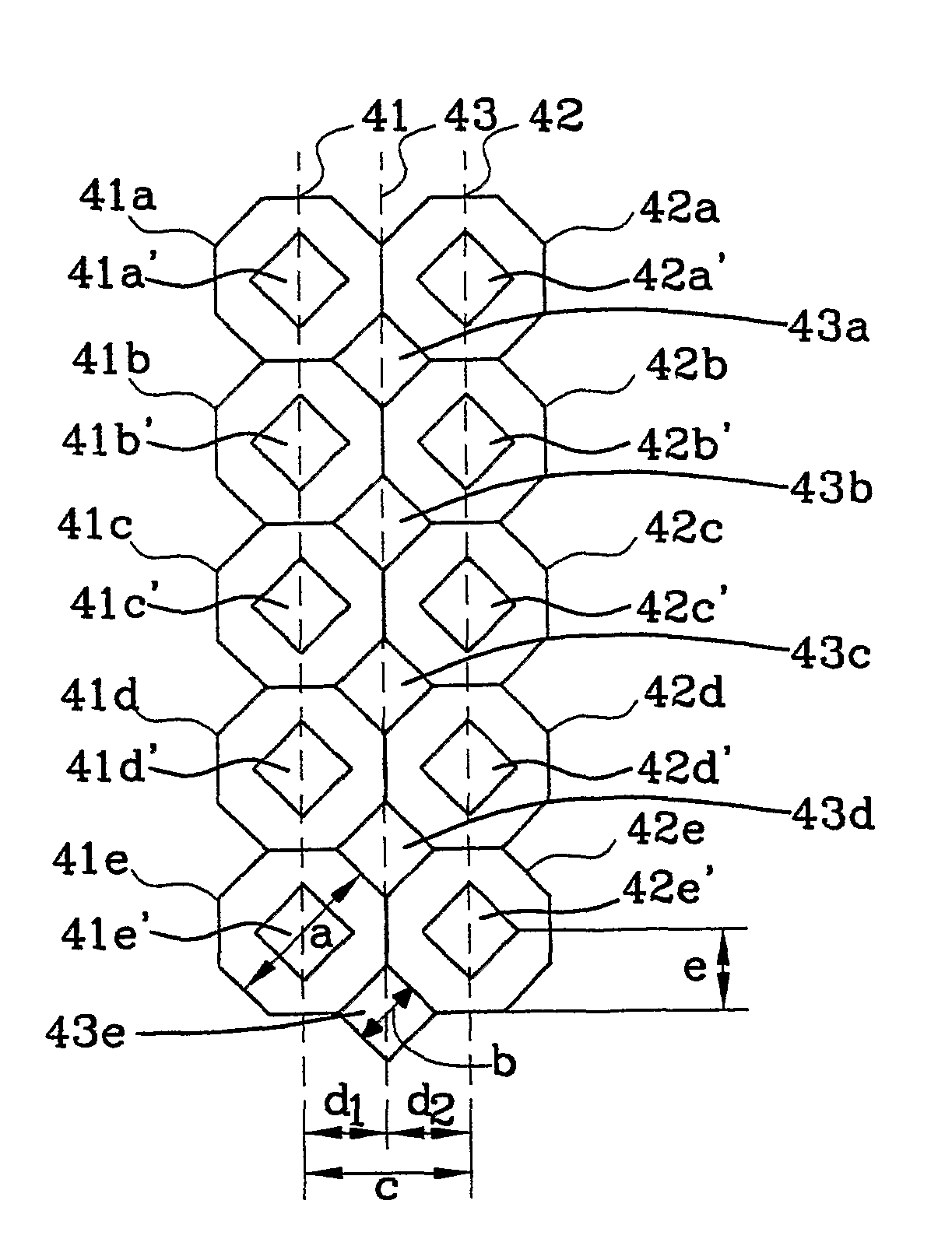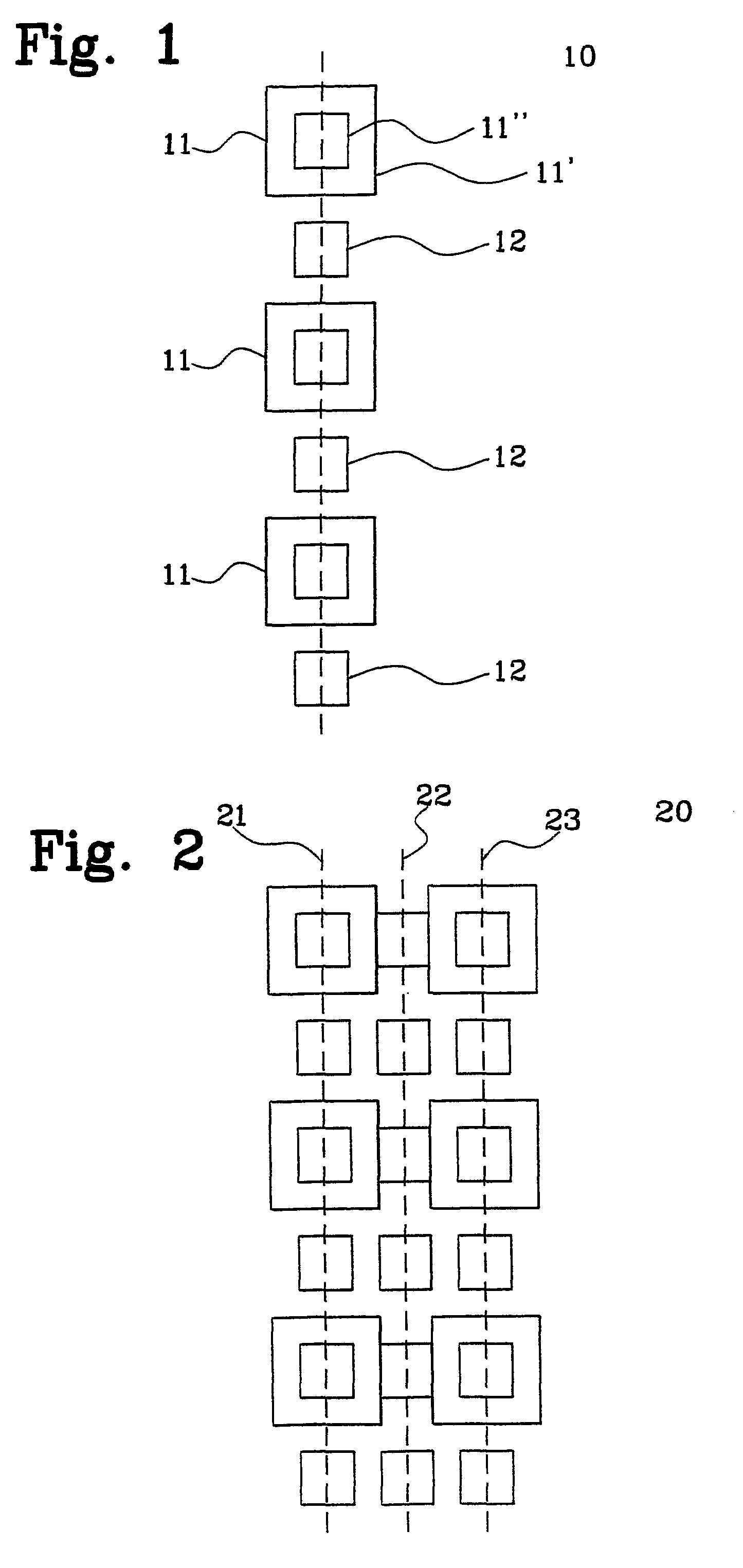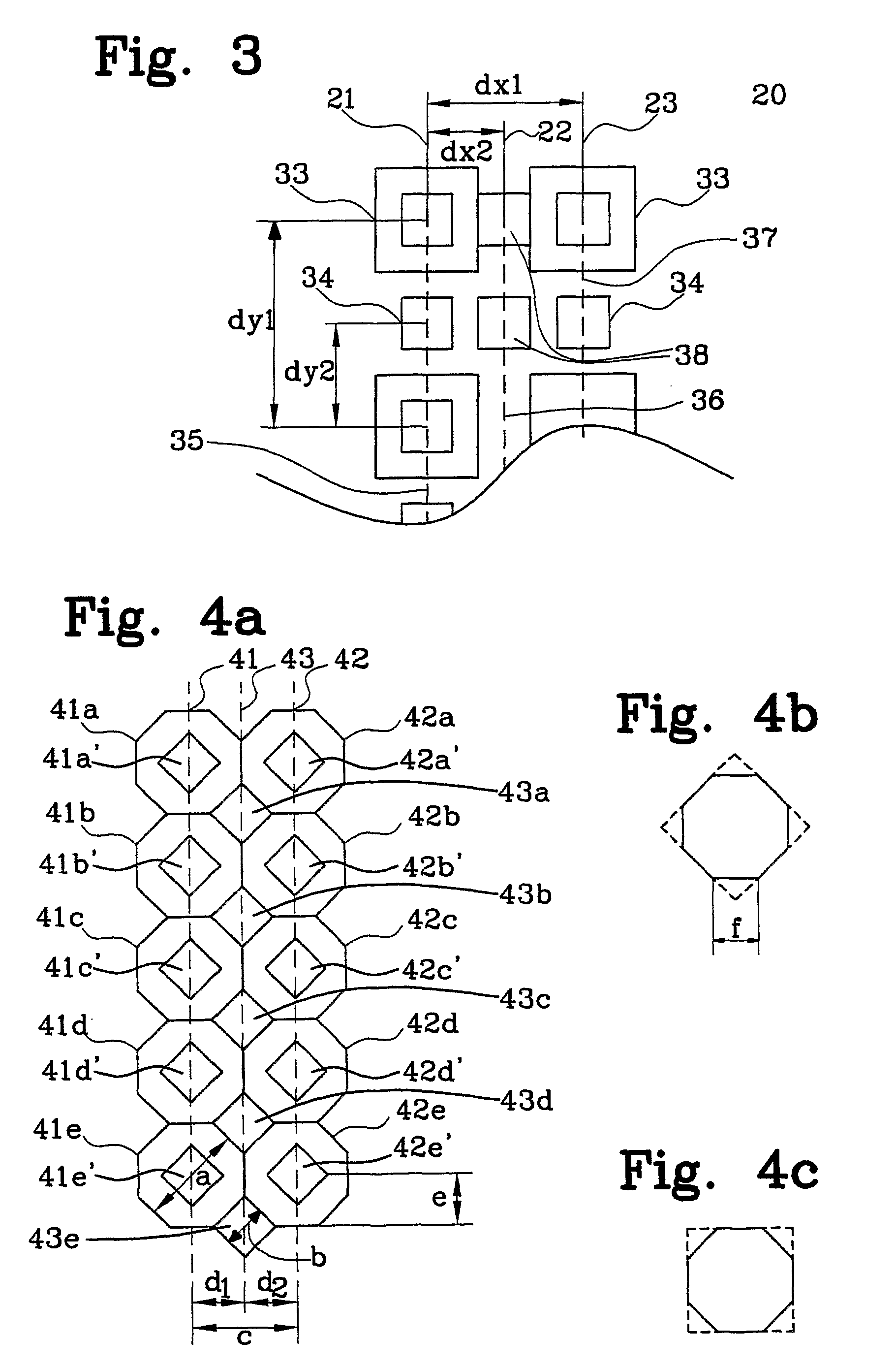Dual band antenna arrangement
a dual-band antenna and antenna technology, applied in the direction of antennas, antenna details, electrical equipment, etc., can solve problems such as imposing ambiguity
- Summary
- Abstract
- Description
- Claims
- Application Information
AI Technical Summary
Benefits of technology
Problems solved by technology
Method used
Image
Examples
Embodiment Construction
[0024]As was mentioned above, FIG. 2 shows a prior art arrangement for azimuth control of a beam radiated from an antenna arrangement. As also has been disclosed above, the described arrangement suffers from the disadvantage that an ambiguity regarding the direction of arrival of a received signal frequently arises. This is true in the high-frequency band FB2 and in the low-frequency band FB1. The reason for this will be explained in connection to FIG. 3, which shows a portion of an arrangement of FIG. 2 more in detail.
[0025]In FIG. 3 is shown the upper portion of the arrangement of FIG. 2, i.e., the upper portion of an arrangement comprising two columns of elements 21, 23, each comprising a set of single band elements 34, and a set of dual band elements 33, said elements 33, 34 being aligned along parallel symmetry axes 35, 37. Further, an intermediate column 22 of single band antenna elements 38, aligned along a symmetry axis 36, which is parallel to said axes 35, 37, is imposed b...
PUM
 Login to View More
Login to View More Abstract
Description
Claims
Application Information
 Login to View More
Login to View More - R&D
- Intellectual Property
- Life Sciences
- Materials
- Tech Scout
- Unparalleled Data Quality
- Higher Quality Content
- 60% Fewer Hallucinations
Browse by: Latest US Patents, China's latest patents, Technical Efficacy Thesaurus, Application Domain, Technology Topic, Popular Technical Reports.
© 2025 PatSnap. All rights reserved.Legal|Privacy policy|Modern Slavery Act Transparency Statement|Sitemap|About US| Contact US: help@patsnap.com



